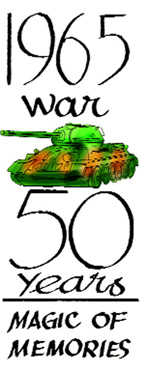If anything changed the course of the war, it was opening of the western (Punjab) front immediately after Pakistan launched a massive offensive under Operation Grand Slam in the Chhamb-Jaurian sector of Jammu and Kashmir. 11 Corps, which was responsible for manning the Punjab border, was to spearhead the offensive as part of Western Command’s strategic push in the Ravi-Sutlej corridor into the heartland of Pakistan, threatening Lahore.
11 Corps with its three divisions — 15, 7 and 4 — undertook the task. As part of 15 Division, my battalion, 7 Punjab, was ordered to advance along the Amritsar-Lahore axis on September 5-6. The battalion was commanded by Lt Col Jaswant Singh (later Lt Gen and Vice Chief of Army Staff). He was the eldest of four brothers — three in Punjab Regiment and one in IAF — taking part in combat zone fighting. His elder son was in the IMA then, and his father was a veteran of World War I who had earned a gallantry medal.
Lt Col Jaswant Singh himself was a veteran of World War II. Born in Sialkot, he was well aware of the geography, terrain and the enemy’s psyche as he had served with a battalion comprising Punjabi Muslim troops.
Other than him and Subedar Major Nanak Chand, the battalion had fairly young soldiers and officers as most of the old hands had been transferred to newly-raised battalions in the aftermath of the 1962 India-China war.
The battalion moved swiftly from Ranian and contacted the Pakistani defences ahead of the most formidable obstacle — Icchogil Canal (Bambanwalla-Ravi-Bedian Link Canal or BRBL). No one had any idea about its depth and width.
Sensing the onslaught by the Indian Army around the vital ground Dograi, Pakistan had already destroyed the bridges at Bhaini Dhilwan and Dograiach. The Pakistanis did all in their prowess to thwart the Indian attacks, forcing the attacking battalions to withdraw. Our own forward companies came under such heavy artillery fire that they would have wilted under pressure but for the personal presence of the CO. They did suffer heavy casualties.
The CO, however, did not lose heart and decided to launch a broad daylight attack on Icchogil Uthar village with B and C companies, much against the wishes of his brigade commander.
The CO, in his wisdom, had realised that the enemy would have been worn out and it was time to outsmart them when they least expected an attack.
The attack was launched on September 15-16, supported by tanks and artillery. The troops followed a covered approach provided by trees and bushes and moved silently till they pounced upon the enemy, shouting the war cries of “Jo Bole So Nihal” and “Jwala Mai Ki Jai”, without caring for their lives. After intense fighting, the objective was captured.
Both the young company commanders, Maj MS Bhuttar and Maj Bhikam Singh, were awarded the Vir Chakra, While Lt BS Ahluwalia (posthumous) and Havildar Piara Singh were awarded the Sena Medal. Besides, 42 other awards were bagged by the battalion. The CO too was awarded the VSM.
The battalion suffered 102 dead and wounded and killed over 200 Pakistanis, captured a cache of arms and ammunition and two vehicles.
The unit was bestowed with Theatre Honour Punjab and Battle Honour Dograi. As luck would have it, the battalion is serving in the same area from where it had moved along the Lahore-Amritsar axis 50 years earlier.
The writer served in 7 Punjab. He was the ADC to GOC Jaswant Singh in the 1971 war
×
Unlock Exclusive Insights with The Tribune Premium
Take your experience further with Premium access.
Thought-provoking Opinions, Expert Analysis, In-depth Insights and other Member Only Benefits
Combo
Yearly
Monthly
Already a Member? Sign In Now
Advertisement
Advertisement
Advertisement










